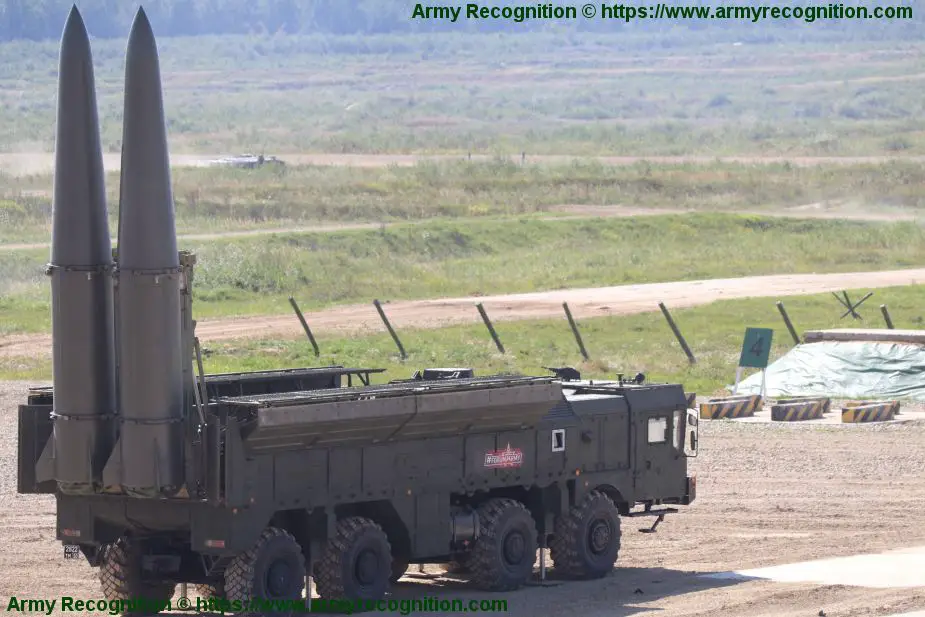Russian Iskander missile brigades will use drones to detect targets
Russian army Brigades of Iskander-M and Tochka-U missiles have been armed with Orlan-10 drones and quadcopters. The units are now able to better detect and destroy targets. The drones will also protect the weapons from subversion. Experts believe drones will make missile formations more autonomous and practically invulnerable for the adversary, the Izvestia daily writes.

Iskander-M short-range tactical missile at Army defense exhibition in Moscow, Russia. (Picture source Army Recognition)
Russian Defense Ministry sources told the newspaper the decision to form drone units in missile brigades was made early this year. The first quadcopter engagement experience was obtained at a recent exercise in Transbaikalia. Drone operators ensured the actions of a missile brigade of the Eastern Military District. They monitored the terrain in Iskander movement area and searched for appropriate sites for firing positions.
Drones engage in various missions. Orlan can independently find targets on the battlefield and provide real-time guidance to missiles. Quadcopters have a defensive mission. They accompany columns on the march and in combat positions, search for adversary subversion groups with the use of optical devices. They are equipped with systems to detect electronic emissions.
"There is a small problem with Orlan, as it has a smaller range than Iskander (120 and 500 km respectively). However, missile brigade commanders can monitor the target in the radius for a long time and fire when it is most appropriate. Moreover, they can monitor the results," expert Anton Lavrov said.
Missile formations did not have their own reconnaissance before. They received all information from superior headquarters. Drones will make Iskander commanders more autonomous. Own reconnaissance will decrease decision-making time and accelerate the combat mission.
"As for quadcopters, they can guard deployment places in peace and wartime," expert Vladislav Shurygin said.
"They can ensure the security of the launchers more effectively and with lesser effort. Quadcopter operator can see more than a soldier on duty. Adversary subversion groups have practically no chance to approach the launchers when drones are in the air," he said.
Orlan-10 is a medium drone with a radius of 120 km. It can fly for 14 hours and ascend to an altitude of 5 km. It transmits video images online. It is a light craft with a takeoff weight of 14 kg and a 5-kg payload. The drone can carry several high-resolution cameras which operate at any time of the day.
The multirole complex comprises several drones, an information processing station and automatic controls. Two-three Orlans are usually engaged in reconnaissance. One flies at an altitude of 1-1.5 km, the second is above with electronic warfare weapons to suppress adversary radars, and the third is 4.5-5 km high to transmit video images to the base, the Izvestia said.

Russia Orlan-10 drone at Army defense exhibition in Moscow, Russia. (Picture source Army Recognition)


























